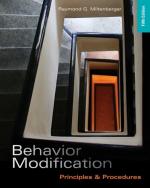|
This section contains 511 words (approx. 2 pages at 300 words per page) |

|
An aspect of behavior therapy that involves weakening or eliminating an undesired response by introducing and strengthening a second response that is incompatible with it.
The type of counterconditioning most widely used for therapeutic purposes is systematic desensitization, which is employed to reduce or eliminate fear of a particular object, situation, or activity. An early example of systematic desensitization was an experiment that is also the first recorded use of behavior therapy with a child. In a paper published in 1924, Mary Cover Jones, a student of the pioneering American behaviorist John Watson, described her treatment of a three-year-old with a fear of rabbits. Jones countered the child's negative response to rabbits with a positive one by exposing him to a caged rabbit while he sat some distance away, eating one of his favorite foods. The boy slowly became more comfortable with the rabbit as the cage was gradually...
|
This section contains 511 words (approx. 2 pages at 300 words per page) |

|


